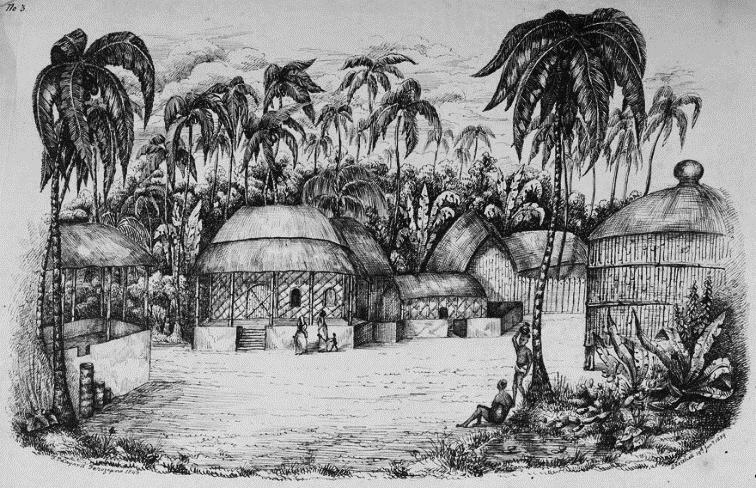The bungalow—that familiar, squat, single-storey house synonymous with practicality and quiet suburban life—holds a deceptively rich history. Far from being a humble architectural footnote, it represents a remarkable journey of style, adaptation, and empire, evolving from its roots in colonial India to become a defining feature of the 20th-century British streetscape.
The history of the bungalow is not just architectural; it’s a story of how a building form was transplanted across continents and adapted for an entirely new climate and culture.
From Bengal to Britain: The Origin of the Style
The word “bungalow” is derived from the Hindi word bāṅglā (बंगला), which literally means “belonging to Bengal.”
In the 17th and 18th centuries, during the early days of the British Raj in India, colonial officials and settlers needed quick, practical, and cool residences. They adapted the traditional, vernacular houses found in the region of Bengal:
- Thatched Roofs: Often made of straw or reeds, providing excellent insulation against the intense Indian sun.
- Wide Verandas: Crucially, the traditional Indian bāṅglā featured a wide, shaded veranda running along the front or even surrounding the entire house. This served as a transition space, shielding the main walls from direct sunlight and catching any available breeze.
- Single-Storey: This allowed for maximum airflow and kept the living area close to the naturally cooler ground.
These simple, airy, single-storey buildings were adopted and refined by the British, becoming the standard residential form for military outposts, plantation houses, and administrative buildings across India. The design was a perfect blend of practicality and climate control.

The Bungalow Arrives on British Shores
The bungalow made its transatlantic crossing in the late 19th century, carried home by returning colonial officers, traders, and architects who had fallen in love with its low-slung, informal practicality.
The first bungalows in Britain appeared in the 1870s, often as holiday homes in seaside resorts like Birkdale, Merseyside, and on the Kent coast. The appeal was instant, though the architectural rationale changed completely:
| Feature | In Colonial India | In British Countryside |
| Veranda | To provide shade and cooling. | To enjoy the garden; often enclosed later for more living space. |
| Single-Storey | To maximise airflow near the ground. | To facilitate aging in place; ease of movement without stairs. |
| Low Roofline | To minimise surface area exposed to sun. | To blend into the landscape and avoid imposing on the surroundings. |
The bungalow was quickly embraced as the ideal style for a new class of homeowner: one who valued privacy, a connection to the garden, and ease of living.
The Golden Age: Inter-War Britain
The style truly exploded in popularity in the decades between the two World Wars (1918-1939). Rapid urban expansion, combined with the rise of the suburban ideal, saw bungalows being built in large numbers across the British hinterland and on the outskirts of major towns.
Key Factors Driving the Bungalow Boom:
- Plot Size and Aesthetics: Bungalows required wider plots of land but were seen as less imposing and more “country-like” than their two-storey semi-detached neighbours. They offered a perfect fit for the emerging garden city movement.
- Practicality and Cost: They were generally quicker and cheaper to build than two-storey houses, making them an accessible option for first-time homeowners and retirees.
- Demographic Shift: The bungalow became the favoured home for retirees. The lack of stairs made it incredibly popular for older couples, solidifying its association with retirement villages and quieter residential areas—an association that continues to this day.
The Modern Bungalow: An Enduring Icon
Today, the bungalow remains highly valued in the UK property market. While construction slowed after the mid-20th century due to land price increases (making two-storey houses a more efficient use of space), existing bungalows are fiercely sought after.
Modern homeowners and developers appreciate the style for its:
- Adaptability: The simple floorplan is ideal for contemporary open-plan living and often allows for a loft conversion (or dormer bungalow conversion) without major structural overhaul.
- Accessibility: Their single-storey living remains the ultimate standard for aging-in-place and accessible design.
- Development Potential: The generous plot sizes typical of bungalows offer significant potential for extension or redevelopment, making them a prime target for house hunters seeking to customise their space.
The British bungalow, with its unassuming roofline and deep connection to the garden, is a testament to architectural longevity. It’s a colonial import that was expertly adapted, becoming a beloved, practical, and defining piece of British domestic architecture—a quiet sanctuary in the suburban landscape.



